ISSN
2307–3489 (Print), ІSSN
2307–6666
(Online)
Наука
та прогрес транспорту. Вісник
Дніпропетровського
національного університету залізничного
транспорту, 2017, № 5 (71)
ЗАЛІЗНИЧНА
колія
ЗАЛІЗНИЧНА
КОЛІЯ
UDC
629.4.016.56/.024.1
S.
T. DJABBAROV1*
*Dep.
«Construction of Railways, Track and Track Facilities», Tashkent
Institute of Railway
Transport Engineers, Adylkhodzhayev St., 1,
Tashkent, Uzbekistan, 100167,
tel. +99 (890) 185 29 34, e-mail
_saidhon_@inbox.ru.
ORCID 0000-0002-3798-407X
Consideration
of aerodynamic impact in setting
the maximum permissible speeds
of high-speed train
Purpose.
Studies of the effect of aerodynamic pressure on the maximum
permissible speeds of a high-speed train on the existing railway
infrastructure. Methodology. The study of the magnitude and
direction of the aerodynamic pressure, its effect on the maximum
speeds of a high-speed train was carried out on a train model
composed of axisymmetric bodies with conical forms of head and tail
parts. Findings. Determined the values of the aerodynamic
pressure at different distances from the train are, when the
high-speed train moves at a speed of 200 km/h or more. The
maximum speeds of a high-speed train are determined taking into
account the state of the infrastructure of the existing railway,
ensuring the safe operation of a high-speed railway. Originality.
Theoretical studies of aerodynamic pressure from secondary air
currents formed during the movement of high-speed trains are
performed on a model of a train composed of identical axisymmetric
bodies with conical forms of head and tail moving in a compressible
medium. The results of the research allow the regularity of the
change in aerodynamic pressure during the movement of a high-speed
train. Practical value. The obtained results allow to
establish: 1) the maximum permissible speeds of a high-speed
train taking into account the technical condition of permanent
devices and structures of the existing railway infrastructure; 2)
technical parameters of individual objects and structural elements of
the infrastructure of high-speed iron subjected to the effect of
aerodynamic pressure for a given maximum speed of high-speed
trains.
Keywords:
railway transport; high-speed train movement; aerodynamics;
aerodynamic pressure; railway infrastructure; maximum speeds;
technical parameters
Introduction
Half a century of experience in
the operation of high-speed railroads, the results of numerous
theoretical and experimental studies have shown that with an
increase in speed, the character of the aerodynamic field around a
moving high-speed train, the magnitude and vector of air currents
change dramatically. The resulting air flows have a negative
impact on the environment, worsening the safe functioning of the
system «high-speed railway – the environment (or surrounding
objects)».
The
study of air flows generated by trains at high speeds is an urgent
task of ensuring safety on high-speed railways.
Conducted the
experimental and theoretical research
directed carried out are aimed at obtaining information on the
speed, direction of the secondary air currents and aerodynamic
pressure arising from the movement of high-speed trains; assessment
of their impact on the railway infrastructure facilities,
surrounding nature, as well as on people; Security and comfort to
passengers [1–4]. According to the results of experimental
studies, determined the dependences of the aerodynamic drag on the
speed [5]; the interaction of a moving high-speed train with objects
located along the railway, including trains moving along a
parallel path [3, 4, 6–8]; the physics of the formation of
aerodynamic flows in separate parts of a moving high-speed train [5,
9].
Theoretical studies performed on
the model of a high-speed train as an axisymmetric body made it
possible to establish the magnitude and velocity vector of secondary
air currents, as well as aerodynamic effects on railway
infrastructure objects and people [10].
Providing traffic safety for
trains and passengers; uninterrupted operation of the entire
infrastructure of high-speed railway is the main condition for the
organization of high-speed and high-speed passenger train traffic. A
high degree of security is usually provided at all stages of
creating a high-speed highway, i.e. is laid during the design, is
provided during construction and is implemented in the course of
operation of the infrastructure of high-speed railways. This task is
relevant in the design of high-speed train traffic on existing
railways, which were designed for the maximum speed of passenger
trains of 120–160 km/h.
Since, on existing lines,
high-speed traffic is possible after a large-scale reconstruction
and modernization of permanent facilities and structures of the
existing infrastructure, when designing a high-speed traffic
organization using the existing railway infrastructure, the maximum
permissible speeds for a high-speed train for each facility should
be set separately taking into account their technical condition.
Purpose
To ensure the
safe operation of a high-speed railway, it is necessary to consider
the aerodynamic impact on people and railway infrastructure objects
as one of the main safety criteria for high-speed passenger train
traffic, since a train moving at high speed exerts aerodynamic
impact on each
 -th
object by the
-th
object by the
 value.
value.
In this case,
the technical state of the  -th
object allows him to perceive the impact with the maximum
permissible value of
-th
object allows him to perceive the impact with the maximum
permissible value of
 without reducing the safety level of movement high-speed trains.
without reducing the safety level of movement high-speed trains.
In connection with the
foregoing, in order to ensure the safe operation of a high-speed
railway on all sites or structural elements of the infrastructure of
the existing path, the condition
 . (1)
. (1)
Since,
according to Bernoulli’s law, the aerodynamic pressure varies
directly in proportion to the speed of the air flow
 created by the movement of a
high-speed train, let us consider the theoretical aspects of
establishing the value of the maximum train speed ensuring the
fulfillment of condition (1).
created by the movement of a
high-speed train, let us consider the theoretical aspects of
establishing the value of the maximum train speed ensuring the
fulfillment of condition (1).
Methodology
The aerodynamic impact, strength
and directivity of pressure on an object depend on the maximum speed
and duration of the air flow, the spatial location, availability and
proximity of the railway infrastructure objects relative to a moving
high-speed train.
For each
 -th
object (or its structural element) of the infrastructure of the
existing railway, it is possible to compute a design scheme of the
effect of aerodynamic pressure on it (Fig. 1). In all calculation
cases, for a known distance
-th
object (or its structural element) of the infrastructure of the
existing railway, it is possible to compute a design scheme of the
effect of aerodynamic pressure on it (Fig. 1). In all calculation
cases, for a known distance
 from a moving high-speed train
to an object and the maximum permissible impact that a given
from a moving high-speed train
to an object and the maximum permissible impact that a given
 object can perceive, it is necessary to determine the speed of the
high-speed train
object can perceive, it is necessary to determine the speed of the
high-speed train
 and hence the airflow rate
and hence the airflow rate
 that satisfies condition (1).
that satisfies condition (1).
Thus, the
task of determining the aerodynamic impact on object i
is reduced to determining the speed of the secondary airflow
 directly at the
directly at the
 -th
object when the high-speed train moves at a speed
-th
object when the high-speed train moves at a speed
 .
.
As the
development of earlier studies [10] the distribution of the air flow
and the determination of its velocity along a moving high-speed
train, we investigate on a model of a train consisting of a
locomotive and
 wagons. Locomotive and wagons are presented as an axisymmetric body
with streamlined forms of the head and tail parts moving in a
compressible (acoustic) medium [10].
wagons. Locomotive and wagons are presented as an axisymmetric body
with streamlined forms of the head and tail parts moving in a
compressible (acoustic) medium [10].
To simplify the calculations, we
assume that the locomotive and all wagons in the cross section have
the same shape, i.e. Consist of a circular cylinder with the same
shape of the head and tail in the form of cones (Fig. 2).
The
axisymmetric wave equation of the aerodynamic field near a
high-speed train consisting of a locomotive and
 wagons is solved both for a train consisting of one single wagon
[8].
wagons is solved both for a train consisting of one single wagon
[8].

Fig.
1. Calculation schemes for the location of high-speed train
and facilities:
a –
«train-man-object»; b
– «train-passenger on the platform-object»;
c
– «train-passenger on the platform-train»

Fig.
2. Scheme of a high-speed train with a locomotive and 2n
wagons
In the given
case, we consider the function
 for each wagons can be represented in the form
for each wagons can be represented in the form
 ,
where the index
,
where the index
 indicates the ordinal number of the wagons
from the center of the train (
indicates the ordinal number of the wagons
from the center of the train ( corresponds to the number of the middle
car), the index
corresponds to the number of the middle
car), the index
 on the geometric shape of the part of the
wagons. If we assume that the wagon consists of three geometric
parts, i.e. Head, cylindrical, tail parts, then
on the geometric shape of the part of the
wagons. If we assume that the wagon consists of three geometric
parts, i.e. Head, cylindrical, tail parts, then
 (
( corresponds to the cylindrical part,
corresponds to the cylindrical part,
 the tail part,
the tail part,
 the head part).
the head part).
The propagation of an acoustic
wave in the air medium can be represented by the equation (2) with
the boundary conditions (3) and (5) [10]. The condition that the
component along the velocity axis of the medium on the boundary of
the half-space be zero, in contrast to equation (4) [11], takes the
following form
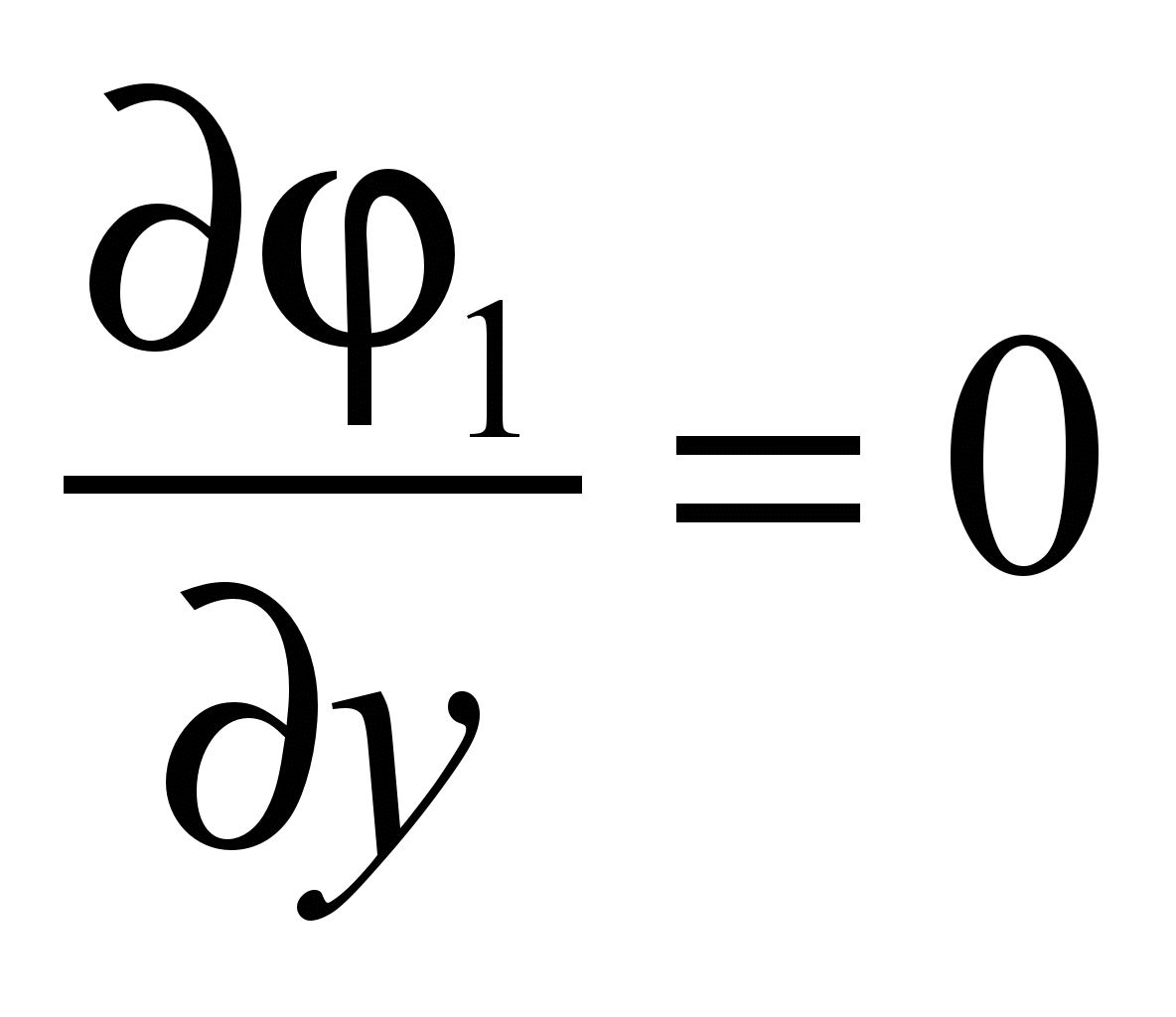 at
at
 . (2)
. (2)
To find the
solution of the equation, the method of sources was used [11].
Considering the function
 satisfying (2), the boundary
conditions (3), (5) [9] and (2), the solution in [10] can be
represented in the form
satisfying (2), the boundary
conditions (3), (5) [9] and (2), the solution in [10] can be
represented in the form
 .
(3)
.
(3)
Where
 – is the power of the source distributed
over the surface of the moving body within
– is the power of the source distributed
over the surface of the moving body within
 ,
,
 .
.
For an axisymmetric body from
formula (3) to [12], it can be asserted that
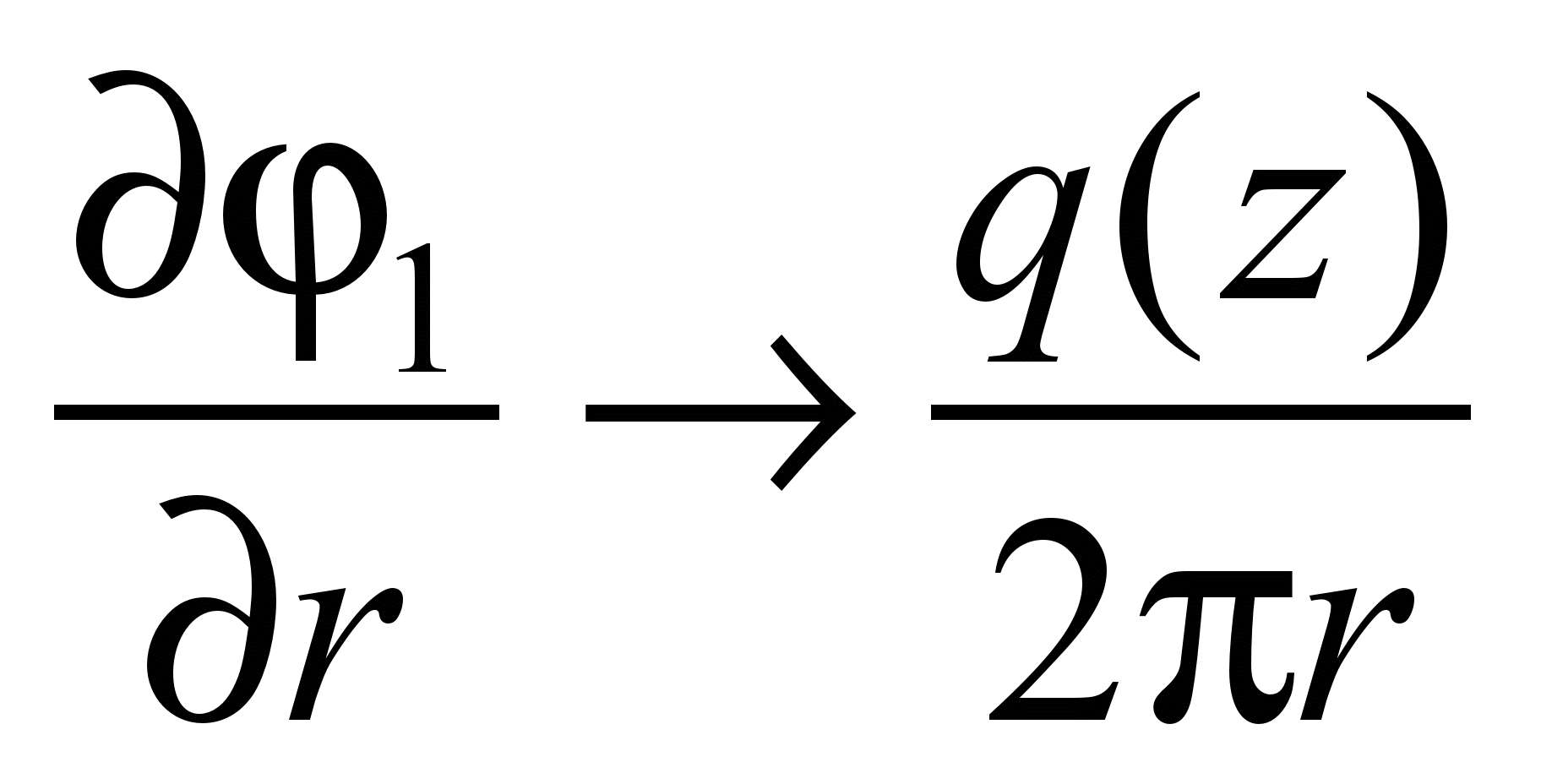 at
at  . (4)
. (4)
Since the
problem is symmetrical with respect to the axis
 ,
a high-speed train consists of a locomotive and
,
a high-speed train consists of a locomotive and
 wagons, the equation of the surface of the body
wagons, the equation of the surface of the body
 ,
as well as the power of the source from each car
,
as well as the power of the source from each car
 and its components can be recorded separately.
and its components can be recorded separately.
For the cylindrical part of the
car:
at  and
and


 .
.
For the head and tail parts of
the wagon located up to the middle of the train:
at 

 ;
;
and 

 .
.
For the head and tail parts of
the wagon located behind the middle of the train:
at


 ;
;
and 

 .
.
For example,
for a wagon
 and its part
and its part
 as:
as:
 ;
;
 ;
;
 .
.
Taking into
account the symmetry of the problem with respect to the variable
 ,
the power of the source from each car and its components
,
the power of the source from each car and its components
 ,
equation (3) can be represented in the following form
,
equation (3) can be represented in the following form

 . (5)
. (5)
We introduce
a new variable
 expressed by the formula
expressed by the formula
 . (6)
. (6)
And consider
the total potential presented in the form
 . (7)
. (7)
The function
 satisfies the boundary condition (2), and the function
satisfies the boundary condition (2), and the function
 satisfies equations (4) only for
satisfies equations (4) only for
 .
Assuming
.
Assuming
 a small parameter and setting
a small parameter and setting
 the function
the function
 ,
we can expand in powers of this parameter as
,
we can expand in powers of this parameter as

 …, (8)
…, (8)
where
 .
.
If we substitute expression (8)
into (5), then formula (7) takes the form
 , (9)
, (9)
where
In the sum of
potentials (9), the first approximation is a function
 that satisfies equation (6) [10] and boundary condition (2).
that satisfies equation (6) [10] and boundary condition (2).
The components of the velocity
vector of air particles can be determined by the following formulas
The absolute
speed of the air flow constitute by the system of high-speed train
cars when it moves at a steady speed at an arbitrary point M (x, y,
z) can be defined as
 . (15)
. (15)
The airflow pressure can be
determined from formula
 .
(16)
.
(16)
Findings
As an example, the establishment
of the maximum permissible speed of a high-speed train for a
protected rail crossing is considered.
In this case,
the most vulnerable object to the effect of aerodynamic pressure is
the duty guard on the guarded crossing. In the calculations it is
assumed that a high-speed train consists of a locomotive and four
wagons, i.e.
 ,
the length of the locomotive and wagons
,
the length of the locomotive and wagons
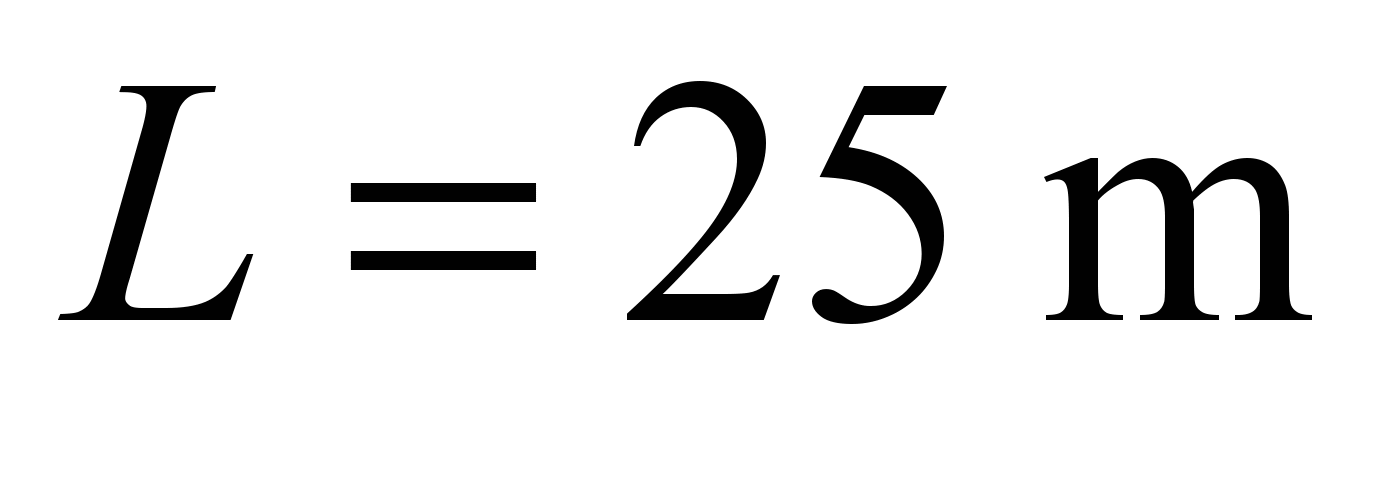 ,
the total length of the train
,
the total length of the train
 ,
,
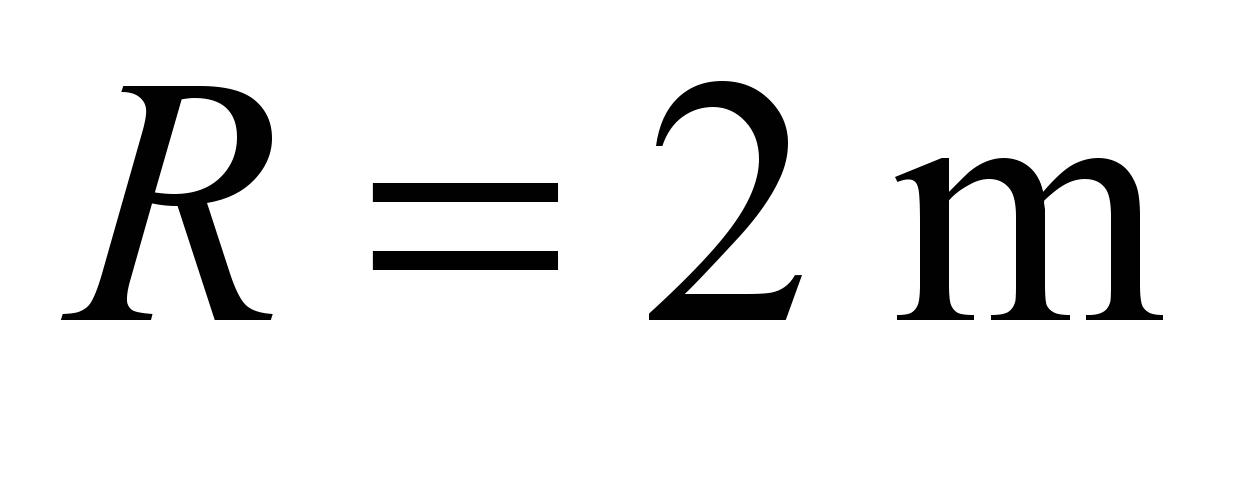 ,
,
 ,
the speed of the train
,
the speed of the train
 is assumed to be 160, 200, 250, 350, 400 km/h. For visual study of
the influence between wagons space on the magnitude of aerodynamic
pressure, space was artificially created.
is assumed to be 160, 200, 250, 350, 400 km/h. For visual study of
the influence between wagons space on the magnitude of aerodynamic
pressure, space was artificially created.
Based on the results of the
calculations, graphs are constructed of the change in the
aerodynamic pressure of the air flow during the passage of a
high-speed train at a speed of 200 km/h along the duty room of the
guard on the guarded crossing (Fig. 3).
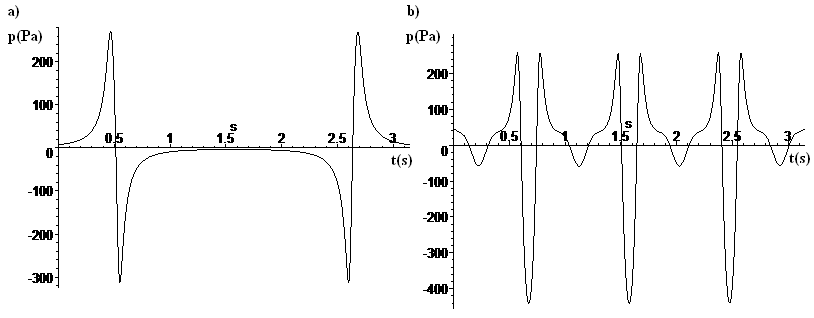
Fig.
3. Graphs of the change in aerodynamic airflow pressure versus
time:
a
– with closed and b
– open between wagon spaces
Analysis of the graphs shows
that in both cases the negative pressure is greater than the
positive one. The reliability of these calculations is confirmed by
the results of previous experiments in the US, Russia, Sweden. The
effect between the wagons space on the magnitude of the negative
(suction) aerodynamic pressure is clearly visible in the graph shown
in Fig. 3, b. On the railways of individual states, the movement of
dual high-speed trains is practiced. With sufficient streamlining of
the head and tail wagons, in places the pairing of trains produces a
negative aerodynamic pressure, the value of which considerably
exceeds the value of the excess pressure. Similar graphs can be
constructed for other velocities and distances.
Thus, it can be argued that in
order to ensure the safe operation of the railway infrastructure, it
is necessary to take into account the aerodynamic flows and
pressures in their independence.
Using the
results of calculations, it is also possible to construct a curve
for the dependence of the magnitude of aerodynamic pressure on the
speed of trains and the distance to the considered point Pmax
(Fig. 4), similarly to Fig. 3 [7]. Using these dependencies, you can
set the maximum permissible speed of a high-speed train along an
object. Suppose that in the considered calculation case the
permissible value of the aerodynamic impact on the moving attendant
is known, which according to the sanitary norms should not exceed
100 PA. In this case, the distance on which the office space is
located is regulated by the C dimension in accordance with GOST 9238
and should be at least 2.45 m from the track axis. Using the curve
Pmax
shown in Fig. 4, one can find the intersection point of the lines
corresponding to the aerodynamic pressure of 100 PA and a distance
of 2.45 m, i.e. Train speed.
Thus, when a high-speed train
moves at a maximum speed of 150 km/h, the corresponding
condition (1) will be satisfied by the value of this point, i.e.
safety of the shift attendant.
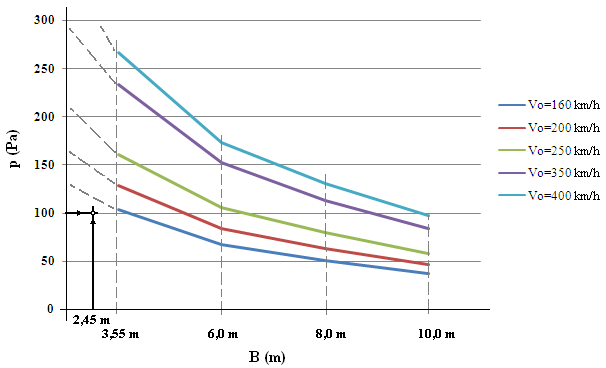
Fig.
4. The curves of the dependence of aerodynamic pressure on the speed
of trains (V0) and
the distance to the object (B)
Originality
and practical value
Theoretical studies of
aerodynamic pressure from secondary air currents formed during the
movement of high-speed trains are performed on a model of a
train composed of identical axisymmetric bodies with conical forms
of head and tail moving in a compressible medium. The results of the
research allow us to establish the patterns of variation in
aerodynamic pressure during the movement of a high-speed train.
Conclusions
The obtained results allow to
establish:
– the
maximum permissible speed of a high-speed train, taking into account
the technical condition of permanent devices and structures of the
existing railway infrastructure;
– technical
parameters of individual objects and structural elements of
high-speed iron infrastructure subjected to the effect of
aerodynamic pressure for a given maximum speed of high-speed trains.
The proposed method can be used
in the practice of designing high-speed train traffic both on
existing and newly constructed railways.
LIST OF REFERENCE LINKS
Исанов,
Р. Ш. Двухслойный поток воздуха при
обтекании высокоскоростного поезда
/
Р. Ш. Исанов // Наука та прогрес
транспорту. – 2013. –
№ 4 (46). – C. 127–134.
doi:
10.15802/stp2013/16609.
Лазаренко,
Ю. М. Аэродинамическое воздействие
высокоскоростного электропоезда
«Сапсан» на пассажиров на платформах
и на встречные поезда при скрещении /
Ю. М. Лазаренко, А. Н. Капускин // Вестн.
ВНИИЖТа. – 2012. – № 4. – С. 11–14.
Ламб,
Г. Гидродинамика / Г. Ламб. – Москва
; Ленинград : ОГИЗ, 1947. – 929 с.
Сагомонян,
А. Я. Проникание / А. Я. Сагомонян. –
Москва
: Изд-во Моск.
ун-та, 1974. – 299 с.
Baker,
C. The Flow Around High Speed Trains / Baker C. // J. of Wind
Engineering and Industrial Aerodynamics. – 2010. – Vol. 98. –
Iss. 6/7. –
P. 277–298. doi: 10.1016/j.jweia.2009.11.002.
CFD
simulation of train aerodynamics: traininduced wind conditions at
an underground railroad passenger platform / A. Khayrullina, B.
Blocken, W. Janssen, J. Straathof // J. of Wind Engineering and
Industrial Aerodynamics. – 2015. – Vol. 139. – P. 100–110.
doi: 10.1016/j.jweia.2015.01.019.
Derkowski,
P. Aerodynamic effects of high speed trains on passenger, track
workers, and other people [Electronic resource] / P. Derkowski, S.
Clark, R. Sturt // Proc. of the Arema 2014 Annual Conference &
Exposition, Chicago, IL,
28.09–01.10.2014.
– Available
at:
https://www.arema.org/files/library/2014_Conference_Proceedings/Aerodynamic_Effects_of_High_Speed_Trains_on_Passengers_Track_Workers_and_Other_People.pdf.
– Title from the screen. – Accessed : 25.09.2017.
Djabbarov,
S. T. Aerodynamic field model of high-speed train / S. T.
Djabbarov, M. Mirakhmedov,
B. Mardonov // Transport Problems :
VIII Conf.
Intern. (27.06–29.06.2016)
/ Silesian
University of Technology. – Katowice,
2016. – P. 107–115.
Harvey,
S. Lee. The Aerodynamic Effects of Passing Trains to Surrounding
Objects and People. Final Report / S. Lee Harvey //
DOTVNTSC-FRA-04-05. U.S. / Department
of Transportation Research and Special Programs Administration John
A. Volpe National Transportation Systems Center. – Washington,
DC, 2009. – April 2009. – Р. 257.
Holmes,
S. Aerodynamic Effects of High-Speed Passenger Trains on Other
Trains. Final Report / S. Holmes, M. Schroeder //
DOTVNTSC-FRA-01-05. U.S. / Department
of Transportation Research and Special Programs Administration John
A. Volpe National Transportation Systems Center. – Washington,
DC, 2002. – September 2000–March 2001.
– Р. 72.
Research
on running stability of CRH3 high speed trains passing by each
other / Z. Sun,
Y. Zhang, D. Guo, G. Yang, Y. Liu // Engineering Applications
of Computational Fluid Mechanics. – 2014. – Vol. 8. – Iss. 1.
–
P. 140–157. doi: 10.1080/19942060.2014.11015504.
Yang
Q.-S. A moving model rig with a scale ratio of 1/8 for high speed
train aerodynamics /
Q.-S. Yang, J.-H. Song, G.-W. Yang // J.
of Wind Engineering and Industrial Aerodynamics. – 2016. –
Vol. 152. – P. 50–58. doi: 10.1016/j.jweia.2016.03.002.
С. Т. ДЖАББАРОВ1*
1*Каф.
«Строительство железных дорог, путь и
путевое хозяйство», Ташкентский институт
инженеров железнодорожного транспорта,
ул. Адылходжаева, 1, Ташкент, Узбекистан,
100167, тел. +99 (890) 185 29 34, эл. почта _saidhon_@inbox.ru,
ORCID 0000-0002-3798-407X
Учет
аэродинамического воздействия
при
установлении максимально-
допустимых
скоростей движения
высокоскоростного
поезда
Цель.
В работе предполагается
провести исследования влияния
аэродинамического давления на
максимально-допустимые скорости
движения высокоскоростного поезда по
существующей инфраструктуре железной
дороги. Методика.
Исследование величины и направления
аэродинамического давления, его влияние
на максимальные скорости высокоскоростного
поезда проведено на модели поезда,
составленного из осесимметричных тел
с коническими формами головных и
хвостовых частей. Результаты.
Определены значения аэродинамического
давления на различном расстоянии от
поезда при движении высокоскоростного
поезда со скоростью 200 км/ч и более.
Установлены максимальные скорости
движения высокоскоростного поезда с
учетом состояния объектов инфраструктуры
существующей железной дороги, что
обеспечивает безопасное функционирование
высокоскоростной железной дороги.
Научная новизна.
Теоретические исследования
аэродинамического давления от вторичных
воздушных потоков, образуемых при
движении высокоскоростных поездов,
выполнены на модели поезда, составленного
из одинаковых осесимметричных тел с
коническими формами головных и
хвостовых частей, движущегося в сжимаемой
среде. Результаты исследований позволяют
установить закономерности изменения
аэродинамического давления при движении
высокоскоростного поезда. Практическая
значимость. Полученные
результаты позволяют установить: 1)
максимально-допустимые скорости
высокоскоростного поезда с учетом
технического состояния постоянных
устройств и сооружений существующей
инфраструктуры железных дорог; 2)
технические параметры отдельных
объектов и конструкционных элементов
инфраструктуры высокоскоростных
железных дорог, подвергающихся
воздействию аэродинамического давления
при заданном значении максимальной
скорости движения высокоскоростных
поездов.
Ключевые
слова: железнодорожный
транспорт; высокоскоростное движение
поездов; аэродинамика; аэродинамическое
давление; инфраструктура железной
дороги; максимальные
скорости; технические
параметры
С. Т. ДЖАББАРОВ1*
1*Каф.
«Будівництво залізниць, колія та колійне
господарство», Ташкентський інститут
інженерів залізничного транспорту,
вул. Адилходжаєва, 1, Ташкент, Узбекистан,
100167, тел. +99 (890) 185 29 34, ел. пошта
_saidhon_@inbox.ru,
ORCID 0000-0002-3798-407X
ВРАХУВАННЯ
АЕРОДИНАМІЧНОГО
ВПЛИВУ
ПРИ ВСТАНОВЛЕННІ
МАКСИМАЛЬНО-
ПЕРЕДБАЧЕНИХ ШВИДКОСТЕЙ
РУХУ
ВИСОКОШВИДКІСНОГО ПОТЯГУ
Мета.
У роботі передбачається провести
дослідження впливу аеродинамічного
тиску на максимально-допустимі швидкості
руху високошвидкісного поїзду по
існуючій інфраструктурі залізниці.
Методика.
Дослідження величини та напрямку
аеродинамічного тиску, його впливу на
максимальні швидкості високошвидкісного
поїзду проведено на моделі поїзда,
складеного з осесиметричних тіл із
конічними формами головних і хвостових
частин. Результати.
Визначено значення аеродинамічного
тиску на різній відстані від поїзда
при русі високошвидкісного поїзда зі
швидкістю 200 км/год і більше. Встановлено
максимальні швидкості руху високошвидкісного
поїзда з урахуванням стану об’єктів
інфраструктури існуючої залізниці, що
забезпечує безпечне функціонування
високошвидкісної залізниці. Наукова
новизна. Теоретичні
дослідження аеродинамічного тиску від
вторинних повітряних потоків, утворених
при русі високошвидкісних поїздів,
виконані на моделі поїзда, складеного
з однакових осесиметричних тіл із
конічними формами головних і хвостових
частин, що рухається в стискуваному
середовищі. Результати досліджень
дозволяють установити закономірності
зміни аеродинамічного тиску при русі
високошвидкісного поїзда. Практична
значимість. Отримані
результати дозволяють встановити:
1) максимально-допустимі швидкості
високошвидкісного поїзда з урахуванням
технічного стану постійних пристроїв
і споруд існуючої інфраструктури
залізниць; 2) технічні параметри окремих
об’єктів та конструкційних елементів
інфраструктури високошвидкісних
залізниць, що піддаються впливу
аеродинамічного тиску при заданому
значенні максимальної швидкості руху
високошвидкісних поїздів.
Ключові
слова: залізничний транспорт;
високошвидкісний рух поїздів;
аеродинаміка; аеродинамічний тиск;
інфраструктура залізниці; максимальні
швидкості; технічні параметри
REFERENCES
Іsanov,
R. S. (2013). Double layer air current
during the high speed train flow-around. Science
and Transport Progress, 4
(46), 127-134. doi:10.15802/stp2013/16609
Lazarenko,
Y. M., & Kapuskin, A. N. (2012). High-speed train
«Sapsan»'s aerodynamical action on passengers standing on
platform and on oncoming train when crossing. Vestnik
of the Railway Research Institute, 4,
11-14.
Lamb,
G. (1947). Gidrodinamika
(A. V. Germogenov, V. A. Kudryavtsev, Trans.). Moscow, Leningrad:
OGIZ-Gostekhizdat.
Sagomonyan,
A. Y. (1974). Pronikaniye [Monograph].
Moscow: Moscow State University.
Baker,
C. (2010). The Flow Around High Speed Trains. Journal
of Wind Engineering and Industrial Aerodynamics,
98
(6/7), 277-298. doi:10.1016/j.jweia.2009.11.002
Khayrullina,
A., Blocken, B., Janssen, W., & Straathof, J. (2015). CFD
simulation of train aerodynamics: traininduced wind conditions at
an underground railroad passenger platform. Journal
of Wind Engineering and Industrial Aerodynamics,
139,
100-110. doi:10.1016/j.jweia.2015.01.019
Derkowski,
P., Clark, S., & Sturt, R. (2014). Aerodynamic effects of high
speed trains on passenger, track workers, and other people. In
Proceedings of the AREMA 2014 Annual
Conference & Exposition, Chicago, IL, September 28 - October 1.
Retrieved from
https://www.arema.org/files/library/2014_Conference_Proceedings/Aerodynamic_Effects_of_High_Speed_Trains_on_Passengers_Track_Workers_and_Other_People.pdf
Djabbarov,
S. T., Mirakhmedov, M., & Mardonov B. (2016). Aerodynamic field
model of high-speed train. In Proceedings
of the VIII International Conference Transport Problems, June
27-29, Katowice. (pp. 107-115).
Katowice: Silesian University of Technology.
Harvey,
S. Lee. (2009). The aerodynamic
effects of passing trains to surrounding objects and people: safety
of high-speed ground transportation systems
(final report DOTVNTSC-FRA-04-05). Washington, DC: Department of
Transportation, Federal Railroad Administration, Office of Railroad
Policy and Development.
Holmes,
S., & Schroeder, M. (2002). Aerodynamic
Effects of High-Speed Passenger Trains on Other Trains
(final report DOTVNTSC-FRA-01-05). Washington, DC: U. S. Department
of Transportation, Federal Railroad Administration.
Sun,
Z., Zhang, Y., Guo, D., Yang, G., & Liu, Y. (2014). Research on
running stability of CRH3 high speed trains passing by each other.
Engineering Applications of
Computational Fluid Mechanics, 8
(1), 140-157. doi:10.1080/19942060.2014.11015504
Yang,
Q.-S., Song, J.-H., & Yang, G.-W. (2016). A moving model rig
with a scale ratio of 1/8 for high speed train aerodynamics.
Journal of Wind Engineering and
Industrial Aerodynamics, 152,
50-58. doi:10.1016/j.jweia.2016.03.002
Prof.
M. B. Kurhan,
D. Sc. (Tech.), (Ukraine); Prof.
S. S. Fayzibaev, D. Sc. (Tech.),
(Uzbekistan) recommended this article to be published
Received:
May 17,
2017
Accessed:
Sept. 21,
2017
doi
10.15802/stp2017/113192 ©
S. T. Djabbarov, 2017
-th
object by the
value.
-th
object allows him to perceive the impact with the maximum
permissible value of
without reducing the safety level of movement high-speed trains.
. (1)
created by the movement of a
high-speed train, let us consider the theoretical aspects of
establishing the value of the maximum train speed ensuring the
fulfillment of condition (1).
-th
object (or its structural element) of the infrastructure of the
existing railway, it is possible to compute a design scheme of the
effect of aerodynamic pressure on it (Fig. 1). In all calculation
cases, for a known distance
from a moving high-speed train
to an object and the maximum permissible impact that a given
object can perceive, it is necessary to determine the speed of the
high-speed train
and hence the airflow rate
that satisfies condition (1).
directly at the
-th
object when the high-speed train moves at a speed
.
wagons. Locomotive and wagons are presented as an axisymmetric body
with streamlined forms of the head and tail parts moving in a
compressible (acoustic) medium [10].
wagons is solved both for a train consisting of one single wagon
[8].